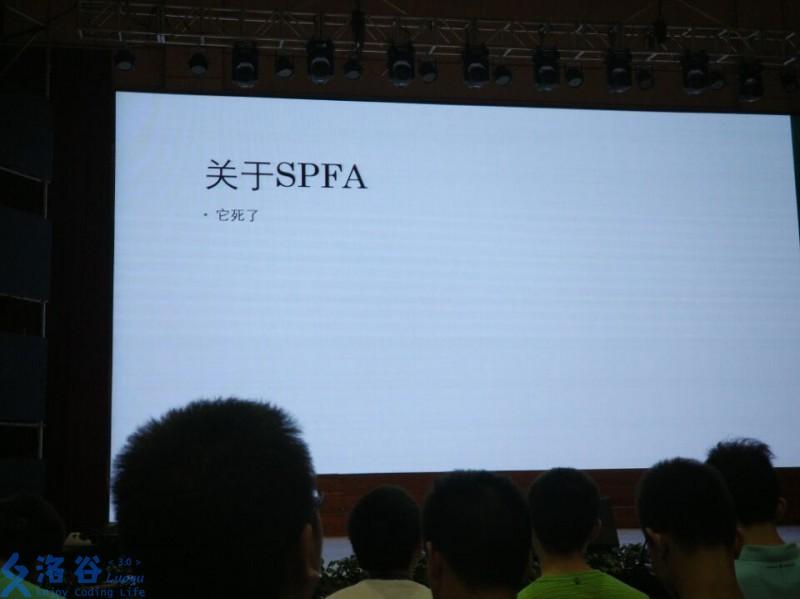单源最短路奇技淫巧之SPFA算法

引入
之前我讲了另一个求单源最短路的方法:dijkstra算法(传送门)
对于迪杰斯特拉算法,他采用的是大贪心,但是这种贪心对于存在负权边的图就不好用了,因为负权边的存在,就会可能会影响最短路径的选择
这里就有了SPFA算法的用武之地!
SPFA的思路:
简单来说其实就是一个bfs
准备工作:一个用来存到源点的最短距离的dis数组、用来确定i点是否在对列中的vis数组,存图用的链式前向星、head数组
- 存图,初始化
- 将源点塞进对列,并对其进行初始化
- 当对列飞空时,取队首,更新队首所有的边,进行松弛操作
- 输出
公交线路
![[外链图片转存失败,源站可能有防盗链机制,建议将图片保存下来直接上传(img-OJAAnXlw-1618040612514)(/Users/chelsea/Library/Application Support/typora-user-images/image-20210410154154658.png)]](https://cdn.jsdelivr.net/gh/Chelseatr/image@main/uPic/watermark,type_ZmFuZ3poZW5naGVpdGk,shadow_10,text_aHR0cHM6Ly9ibG9nLmNzZG4ubmV0L3dlaXhpbl81MTIxNjU1Mw==,size_16,color_FFFFFF,t_70-20230308215202027.png)
裸的SPFA板子题
#include <cstdio>
#include <cstring>
#include <string>
#include <cmath>
#include <iostream>
#include <algorithm>
#include <vector>
#include <stack>
#include <queue>
#include <stdlib.h>
#include <sstream>
#include <map>
#include <set>
using namespace std;
#define inf 0x3f3f3f3f
#define MAX 100000 + 50
#define endl '\n'
//#define mod 1000000007
//const int mod = 1e9 + 7;
#define io ios::sync_with_stdio(false); cin.tie(0); cout.tie(0)
#define mem(a,b) memset((a),(b),sizeof(a))
//typedef long long ll ;
//不开longlong见祖宗!
inline int IntRead(){char ch = getchar();int s = 0, w = 1;while(ch < '0' || ch > '9'){if(ch == '-') w = -1;ch = getchar();}while(ch >= '0' && ch <= '9'){s = s * 10 + ch - '0';ch = getchar();}return s * w;}
int n, m, s, t, tot;
int x, y, z;
int dis[MAX];
int head[MAX];
bool vis[MAX];
struct ran{
int to, next, val;
}tr[MAX];
queue<int>q;
void init(){
mem(head, -1);
mem(tr, 0);
mem(vis, 0);
mem(dis, inf);
tot = 0;
}
void built(int u, int v, int c){
tr[++tot].to = v;
tr[tot].val = c;
tr[tot].next = head[u];
head[u] = tot;
}
void SPFA(){
dis[s] = 0;vis[s] = 1;
q.push(s);
while (!q.empty()){
int now = q.front();q.pop();
vis[now] = 0;//一定记得及时更新vis
for(int i = head[now]; i != -1; i = tr[i].next){
int u = tr[i].to;
if(dis[u] > dis[now] + tr[i].val){
dis[u] = dis[now] + tr[i].val;
if(!vis[u]){
q.push(u);
vis[u] = 1;//更新vis
}
}
}
}
if(dis[t] == inf)cout<<-1<<endl;
else cout<<dis[t]<<endl;
}
int main(){
io;
init();
cin>>n>>m>>s>>t;
for(int i = 1; i <= m; ++i){
cin>>x>>y>>z;
built(x, y, z);
built(y, x, z);
}
SPFA();
return 0;
}
